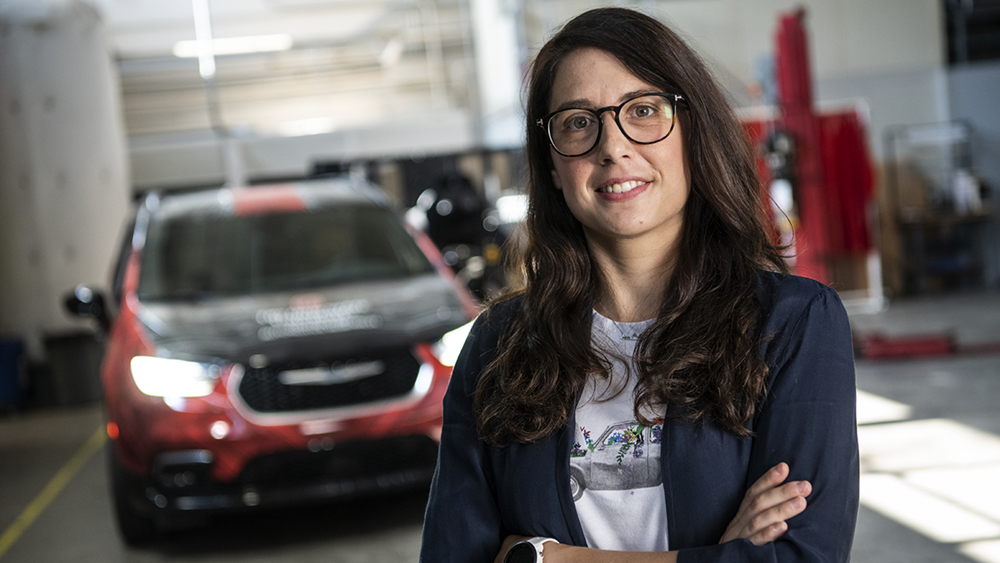Next-generation vehicle optimization
Stephanie is optimizing next-gen vehicles for a more efficient, sustainable world

Stephanie Stockar thrives on challenges. That’s why her research focuses squarely on one of the biggest challenges we face: sustainability.
Specifically, Stockar is devoted to unlocking the intricacies of making cars and trucks more efficient, from saving us money at the pump to making hybrid, electric and autonomous vehicles run smoother and longer.
“There are so many problems related to optimizing a vehicle, making it more efficient,” Stockar says. “I love it, it’s so challenging. But also, it has a big impact on everyday lives.
“Everyone drives a car, if you can save 1% on one vehicle and propagate it, you’re saving a lot of energy, decreasing greenhouse gas emissions, making mobility cheaper. Even the problem of food deserts, if you have efficient autonomous vehicles, you’re connecting cities better. I find it very rewarding.”
Stockar is an assistant professor in the Department of Mechanical and Aerospace Engineering (MAE) at Ohio State and an affiliate to the Center for Automotive Research (CAR). She uses modeling and simulation to discover how energy systems can be optimized and controlled, whether that’s tweaking the HVAC system of a smart home or improving the powertrain in your car.
“(Stockar) is willing to spend time and effort exploring new ideas, even if the outcome is uncertain, which is inspiring to me.”
“Many of Dr. Stockar’s research topics focus on solving real-world engineering problems,” says Li Tang, advanced propulsion control senior engineer at BorgWarner. “She has an ability to balance research and development with the needs of industry to bring technologies to market.
“(Stockar) is willing to spend time and effort exploring new ideas, even if the outcome is uncertain, which is inspiring to me.”
Tang, a 2015 Ohio State graduate and former student at CAR, is collaborating with Stockar on the NEXTCAR project (Next-Generation Energy Technology for Connected and Automated On-Road Vehicles), funded by the Department of Energy. Through NEXTCAR, Ohio State researchers like Stockar are working to optimize fuel economy in connected and automated vehicles.
It’s the second such project. In the first NEXTCAR project, Ohio State researchers improved fuel economy on a light-duty vehicle by more than 20%. The goal of this iteration aims to improve energy efficiency in a plug-in hybrid electric vehicle with Level-4 automation by 30%. Level-4 automation is one step below fully autonomous vehicles, meaning a vehicle can drive itself so long as a human is present in the car.
“We’re looking at how we can use this technology in the best possible way, smoothing the velocity profile, optimizing the power,” Stockar says.
Stockar says projects like NEXTCAR wouldn’t be possible without the infrastructure CAR has built.
“It’s not just physical resources but it’s the people we have here,” she says. “The engineers, technicians, the pipeline of students. It’s an incredible amount of expertise. And what we do is very impactful.”